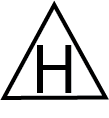Michigan Trout Flies
The Adams Dry Fly
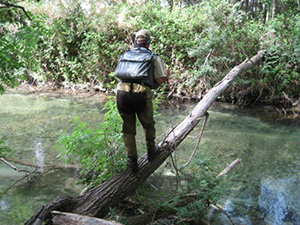 Introduction
Introduction
The Adams dry fly is the most popular trout fly in history. Ask any avid trout fisherman for the first word that comes to mind when prompted with "trout fly", and the response will commonly be "Adams".
(image source: savannahnow.com )
History
It all started in 1922 with Leonard Halladay of Kingsley (Mayfield Township) Michigan, approximately 12 miles south of Traverse City. Trout fishing was a hobby of Mr. Halladay, owner of the Mayfield Hotel that previously housed lumberjacks during the lumbering boom in the region. As the logging industry waned, the region became attractive for its trout streams, in particular, 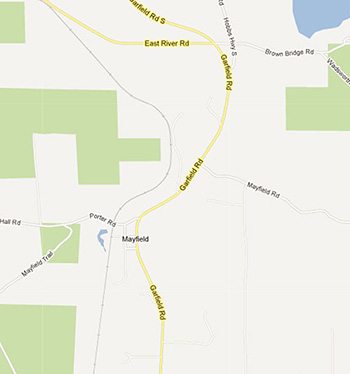
Among Mr. Halladay's trout fishing companions were Charles Adams and his son Lon, attorneys from Ohio who summered in the area. One story is that Lon Adams approached Mr. Halladay with either an insect specimen or an idea about a form and asked that he apply his fly-tying skills to match the conception with an artificial pattern. An alternative story is that Mr. Halladay conceived and tied it, and presented it one day to Mr. Adams while fishing Mayfield Pond, an impoundment of Swainston Creek, which is a tributary of the Boardman River (map source: maps.google.com ). Mr. Adams called the pattern a knockout, and 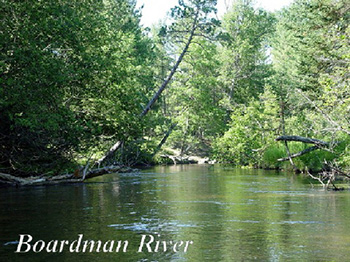 Mr. Halladay named it for Mr. Adams because he was the first to catch a trout with it. Although the origin of the pattern idea remains uncertain, Mr. Halladay was unequivocally was the first to apply it to a hook and name it the Adams. The Boardman River and its coldwater tributaries have persisted as classic trout fishing destinations among the most avid trout fishermen.
Mr. Halladay named it for Mr. Adams because he was the first to catch a trout with it. Although the origin of the pattern idea remains uncertain, Mr. Halladay was unequivocally was the first to apply it to a hook and name it the Adams. The Boardman River and its coldwater tributaries have persisted as classic trout fishing destinations among the most avid trout fishermen.
(information and image source: hatchesmagazine.net )
What Is An Adams?
Most trout flies are designed to imitate the body forms of insect species at a stage in their life cycle that is favored as a food source. The Adams is one of the type that is an attractor that doesn't represent any particular insect species. The colors, form and the way it presents itself on the water are irresistable to trout rising to eat off the surface. Therefore, many fishermen use the Adams as their first selection when approaching water they are fishing for the first time, using it as a reconnaissance tool for locating the trout inhabitants.
Tying Recipe
Hook: Mustad 94840 or 94833, size 12-14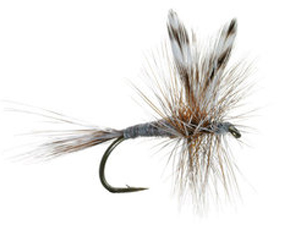
Thread: black
Tail: golden pheasant tippet, two strands
Wings: grizzly hackle tips, tied semi-spent, advanced forward
Body: gray wool yarn
Hackle: grizzly & brown, mixed
Tying Notes: Tie using standard methods.
sources for text and photographs (citations)
(image source: fiveriversflyco.com )
(information sources: michigandryflies.net; troutflies.com )
